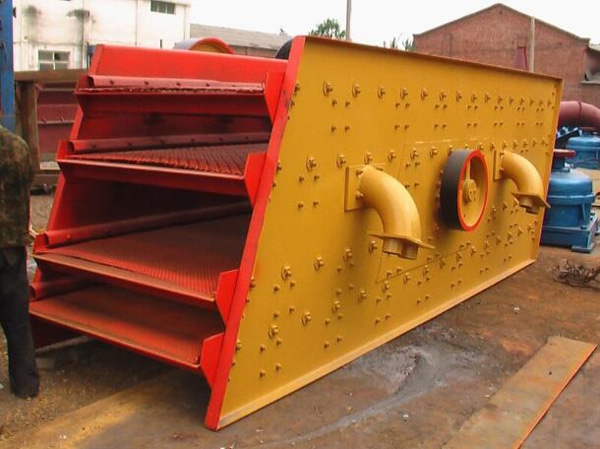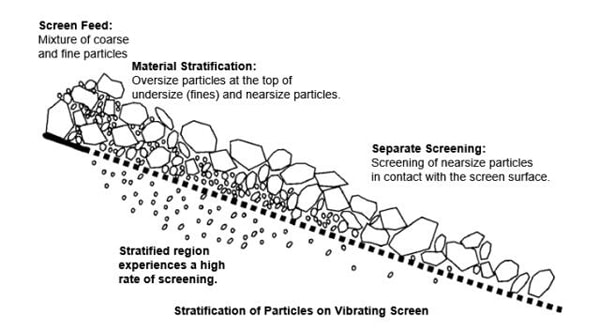What is the vibrating screen working principle? We have knowledge of it, first.
Now, Vibrating screens are widely used in industrial sectors such as mining, metallurgy, coal, hydropower, transportation, and chemical sectors to perform a variety of processes. such as screening, grading, washing, decontamination, and dewatering of materials. Mineral processing is an intermediate link in mining and smelting. It efficiency not only directly affects the beneficiation productivity but also has a profound impact on the rational use of national resources.

Although the vibrating screening machine has achieved unprecedented development. The theoretical framework of the vibratory screens has been stabilized and matured in recent years. But the high screening efficiency and large output is a new direction in the development of screening research all the time.
Vibrating screen working principle:
The coal or ore mined at the mining site, or the broken material, needs to be divided into several grades with similar particle size or dehydrated, de-mediated, de-sludged, sometimes several items before the material are used or further processed. And there is. When performing the above work, there is always a problem of grading of the through-holes of the material passing through the screen surface. And the grading of the material through the sieve surface is called sieving.
Through the research on the screening process of materials, it is found that the screening of materials can be divided into two phases.
- The fine-grained material having a size smaller than the mesh size reaches the sieve surface through the material layer composed of the coarse-grained material;
- The fine particulate material is sieved through the sieve holes on the sieve surface.
It is necessary to satisfy the condition that relative motion between the material and the screen surface, in order to smoothly complete the screening process of the material. Therefore, the screen box should have suitable motion characteristics. On the one hand, the material on the screen surface can be loosened; On the other hand, the coarse grain material plugged in the sieve hole will jump aside to the road is smooth.
In the actual production process, the actual screening process is: “After a large number of different sizes and coarse and fine mixed materials enter the screen surface. Only a part of the material is in contact with the screen surface. In this part of the material contacting the screen surface, the fine particulate material is not completely smaller than the mesh size. And the remaining fine particulate material which is mostly smaller than the mesh size is distributed throughout the entire layer.
Through the movement of the screen box, the material layer on the screen surface is loosened. So that the existing gap between the large particle materials is further enlarged. And the small particle material is taken through the gap and transferred to the lower layer. At the same time, the bulk material site reaching higher during the movement, because the gap is small between the granular material. So the original disordered material particle group was separated. the layer was stratified according to the particle size. And the arrangement rule of the small particle material under the coarse particle material was formed.

vibrating screen diagram
The fine-grained material reaching the sieve surface can be smoothly shifted due to its smaller size than the mesh size. And finally, the separation of the coarse and fine-grained materials is completed, and the screening process is completed. However, sufficient separation cannot be achieved in the sieve. In time-sharing, generally, some of the fine particulate material remains in the coarse particulate material on the sieve and cannot be permeable. The research shows that although the size of the fine particulate material is smaller than the sieve hole, the ease of screening is not the same. Compared with the sieve holes, the smaller the particle size, the easier the sieve is, and the more difficult it is.
How to distinguish the good and bad screens
A good vibrating screen must be reliable. Minimize wear and maintenance, and have a strong vibration as any vibrating machine that boasts. The more it vibrates the better it goes, that is, it gives more production and efficiency.
On the other hand, most of the “bad” screens are not really bad but inappropriate to use. If the product is wet and sticky, it will stick to a metal screening element rather than a polyurethane screening element. If it is dry and fine, the screen should be dust-tight. In case it is a matter of screening large and heavy particles, the screen should be very robust. And if it is very robust and used with fine products, it will consume more than necessary in electricity and maintenance costs.
